For organizations seeking to improve and optimize service processes, the service blueprint is a valuable tool. This graphical representation tool allows organizations to clearly understand the overall customer experience, identify potential problems, and find solutions. Below, we will guide you step by step on how to create a service blueprint, accompanied by examples for illustration.
What is the Service Blueprint Format?
The service blueprint format is a visual representation of the service delivery process that highlights the various touchpoints, interactions, and systems involved. It helps organizations understand and analyze the customer journey, identify pain points, and design better service experiences. While there is no one-size-fits-all format for service blueprints, they typically include the following components.
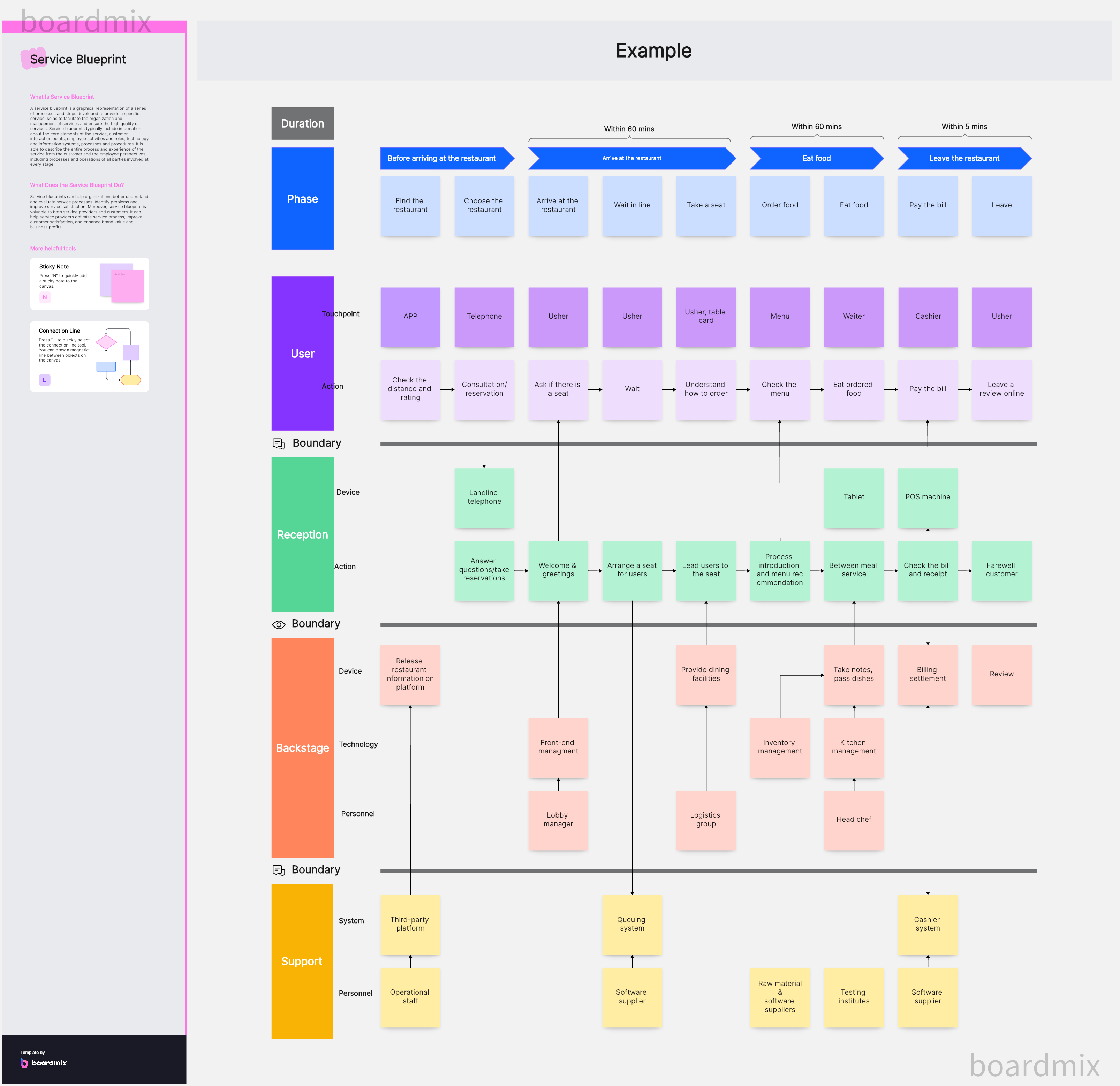
1. Customer Journey
This section maps out the steps and stages of the customer's interaction with the service, from initial contact to completion.
2. Frontstage Actions
These are the visible actions taken by employees or customers during the service encounter. It includes customer interactions with employees, self-service kiosks, or any other touchpoints.
3. Backstage Actions
These are the behind-the-scenes activities that support the frontstage actions, such as order processing, inventory management, or data analysis.
4. Support Processes
This section outlines the processes and systems that enable the delivery of the service, such as CRM software, communication tools, or supply chain management systems.
5. Physical Evidence
This component includes tangible elements that shape the customer experience, such as the physical environment, signage, or product displays.
6. Customer Actions
These are the actions taken by customers before, during, or after the service encounter, such as filling out forms, providing feedback, or making a purchase.
7. Employee Actions
This section outlines the actions and behaviors expected from employees during the service delivery process, including their interactions with customers and their adherence to service standards.
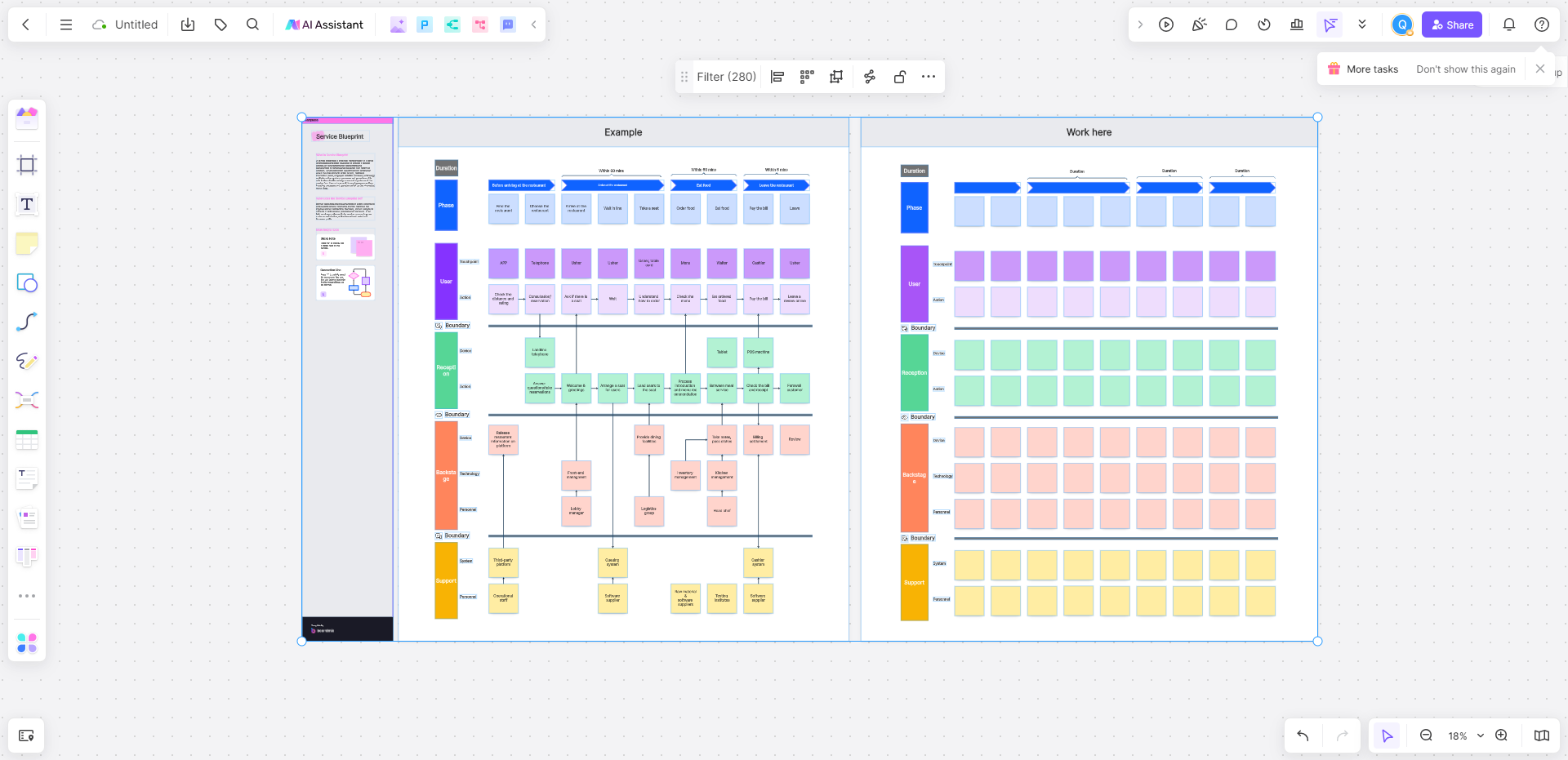
By using this format, organizations can gain a comprehensive understanding of the service process and identify areas for improvement or innovation. It also helps align different departments and stakeholders in delivering a consistent and seamless service experience.
What are the 6 Steps in Building a Service Blueprint?
Determine Goals
Before starting to create a service blueprint format, you need to first clarify the goals you want to achieve. This may include improving a specific service process, increasing customer satisfaction, optimizing internal operational efficiency, etc.
Define Customer Actions
After determining the goals, list all the actions of customers in the entire service process. For example, in the dining process of a restaurant, customer actions may include finding a restaurant, booking seats, ordering food, dining, and paying.
Describe Front Desk and Backstage Interactions
Next, list front desk interactions and backstage interactions separately. Front desk interaction refers to direct interaction between customers and service staff such as ordering food or asking for information. Backstage interaction refers to internal operations carried out for providing front desk interactions like preparing food or processing orders.
Define Support Processes
Support processes are activities that ensure the normal operation of the entire service process such as inventory management or equipment maintenance. List all key support processes and add them to the Service Blueprint.
Mark Physical Evidence
Physical evidence includes all physical elements that customers come into contact with during the service process such as building decorations or menus etc.. These elements can affect customers' perceptions & experiences.
Add Timeline
Adding a timeline to the blueprint can clearly show the time required for the entire service process & help identify any possible delays or inefficient links.
Review & Adjust Service Blueprint
After completion - review multiple times & adjust according to feedback ensuring its accuracy completeness & compliance with actual conditions.
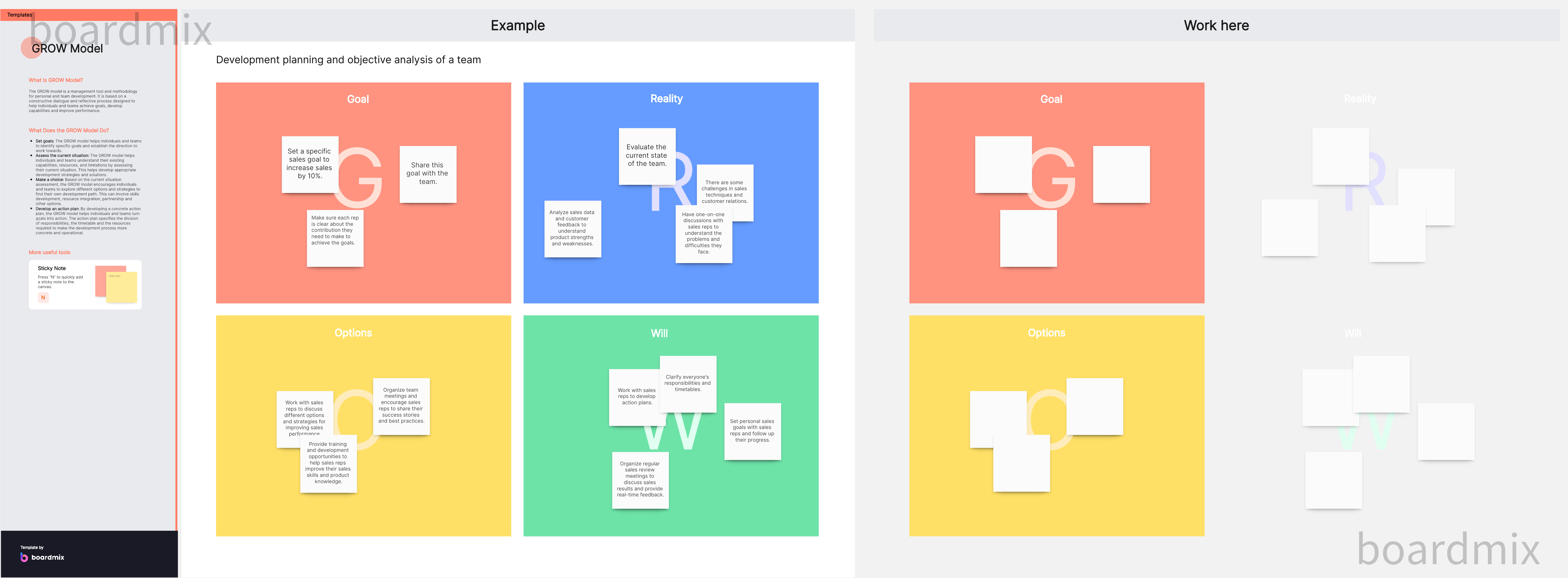
Service Blueprint Design Example
Coffee Shop Service Blueprint Example: Above is how you make a Service Blueprint - let's look at an example below. Suppose we are making a Service Blueprint for a coffee shop:
- After determining our goal (improving customer experience & optimizing order flow), we listed customer actions (choosing drinks placing orders waiting receiving drinks paying).
- Next, we described front desk interactions (receiving orders and making drinks) & backstage interactions (cleaning equipment and preparing ingredients).
- Then we defined support processes (inventory management staff training) and marked physical evidence (menu counter utensils etc.).
- Finally, we added a timeline to the blueprint - the whole process from entering the shop to leaving takes about 20 minutes. After reviewing and adjusting, this Service Blueprint was completed.
What is the Best Practice of Service Blueprint Design?
The best practice of service blueprinting involves several key steps to ensure its effectiveness. Here are some recommendations.
- Define the scope: Clearly define the scope of the service blueprint by identifying the specific service process or customer journey you want to map. This will help you focus on the key touchpoints and interactions that are most critical for your business.
- Engage stakeholders: Involve stakeholders from different departments and levels of your organization to gather insights and perspectives. This collaborative approach will ensure that all aspects of the service delivery are considered and that the blueprint reflects a holistic view of the service process.
- Map the customer journey: Start by mapping out the customer journey from start to finish, including all the touchpoints, interactions, and channels involved. This will help you understand the various stages of the customer experience and identify pain points or areas for improvement.
- Identify actions and processes: Identify the specific actions taken by customers and employees at each touchpoint, as well as the underlying processes that support these actions. This level of detail will help you identify bottlenecks, inefficiencies, or areas where customer satisfaction can be improved.
- Visualize interactions: Use symbols, icons, or visuals to represent different elements of the service blueprint format, such as customer actions, employee actions, processes, or systems. This visual representation will make it easier to understand and communicate the service process to stakeholders.
- Analyze pain points and opportunities: Analyze the service blueprint to identify pain points or areas where the customer experience can be enhanced. Look for opportunities to streamline processes, improve employee training or communication, or introduce new technologies or tools that can enhance the overall service delivery.
- Continuously update and refine: Service blueprints should not be static documents. Regularly review and update your blueprint as your business evolves, new technologies are introduced, or customer expectations change. This will ensure that your service delivery remains aligned with customer needs and industry trends.
By following these best practices, you can create a comprehensive and actionable service blueprint format that helps improve your service delivery and enhances the overall customer experience.
How to Make a Service Blueprint Design in Boardmix?
To make a service blueprint design in Boardmix, you can follow these steps.

1. Sign up for an account on Boardmix's website.

2. Once you're logged in, click on the New board button to create a new one.

3. Choose a template or start from scratch. Boardmix offers a variety of customizable templates to choose from, so you can select one that fits your specific needs or create a blueprint from scratch.
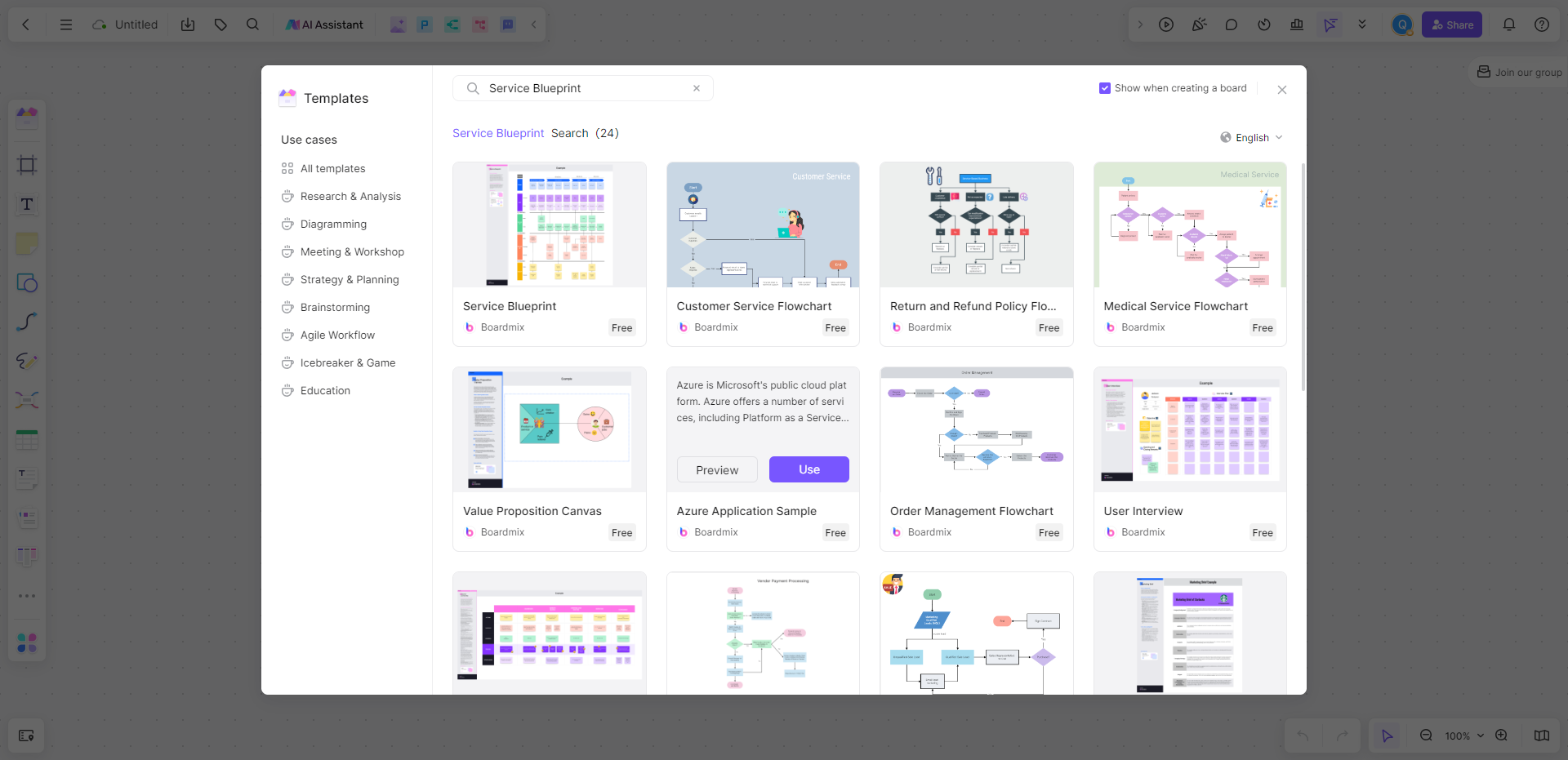
4. Add the various elements of your service blueprint, such as customer actions, employee actions, processes, touchpoints, and interactions.
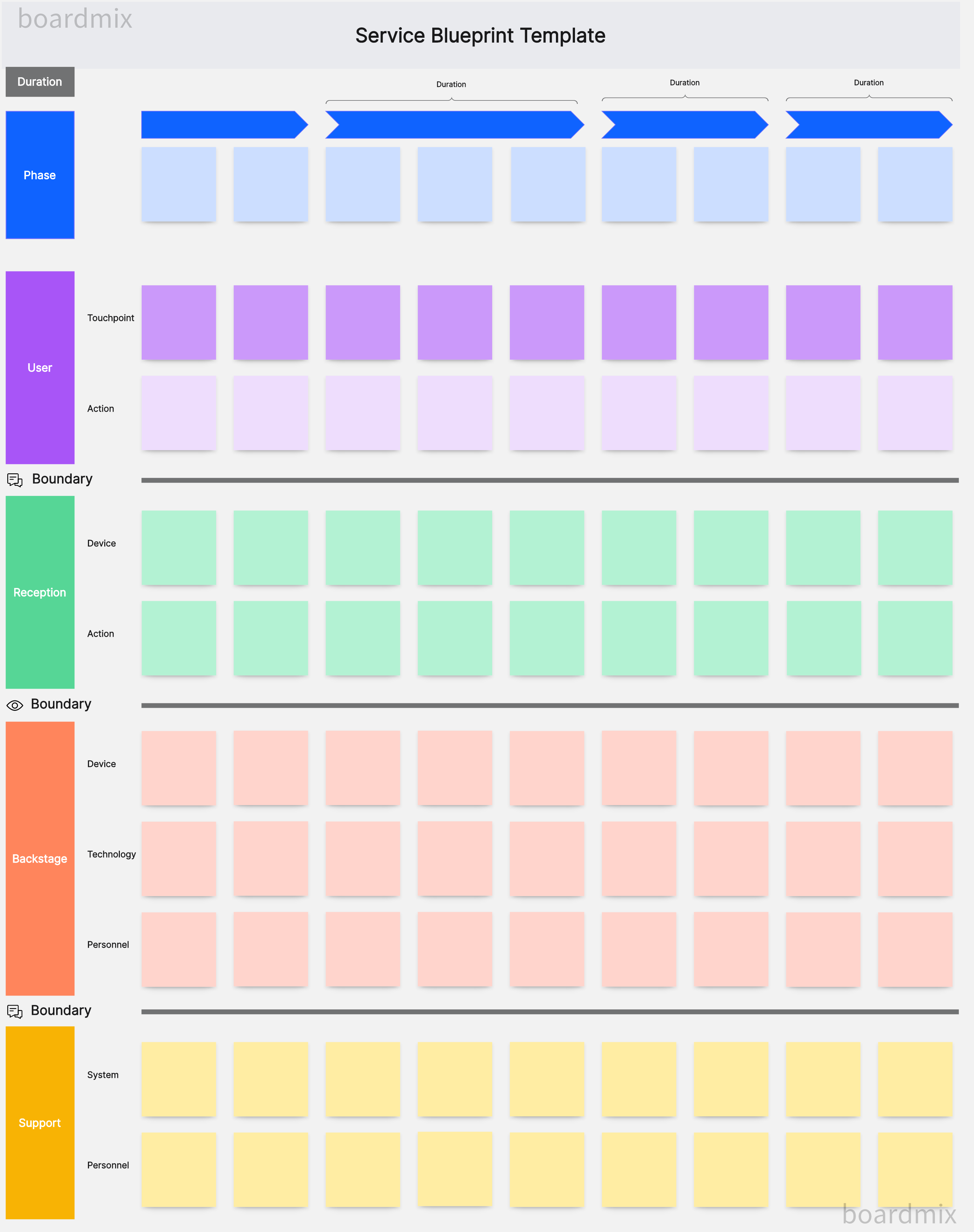
5. Use the drag-and-drop feature to easily position and arrange the elements on your blueprint.
6. Customize the symbols and visuals to represent each element accurately. You can use different colors, icons, and shapes to differentiate between different elements.
7. Collaborate with your team by inviting them to contribute their insights and perspectives. Boardmix allows multiple users to work on the same blueprint simultaneously, fostering collaboration and alignment.
8. Continuously update and refine your service blueprint as needed. As your business evolves and changes, it's important to keep your blueprint up to date to ensure its effectiveness.
Remember, Boardmix provides an intuitive and user-friendly platform that simplifies the process of creating a service blueprint. By following these steps, you'll be able to design a comprehensive and visually appealing service blueprint that helps enhance your service delivery and improve the overall customer experience.








